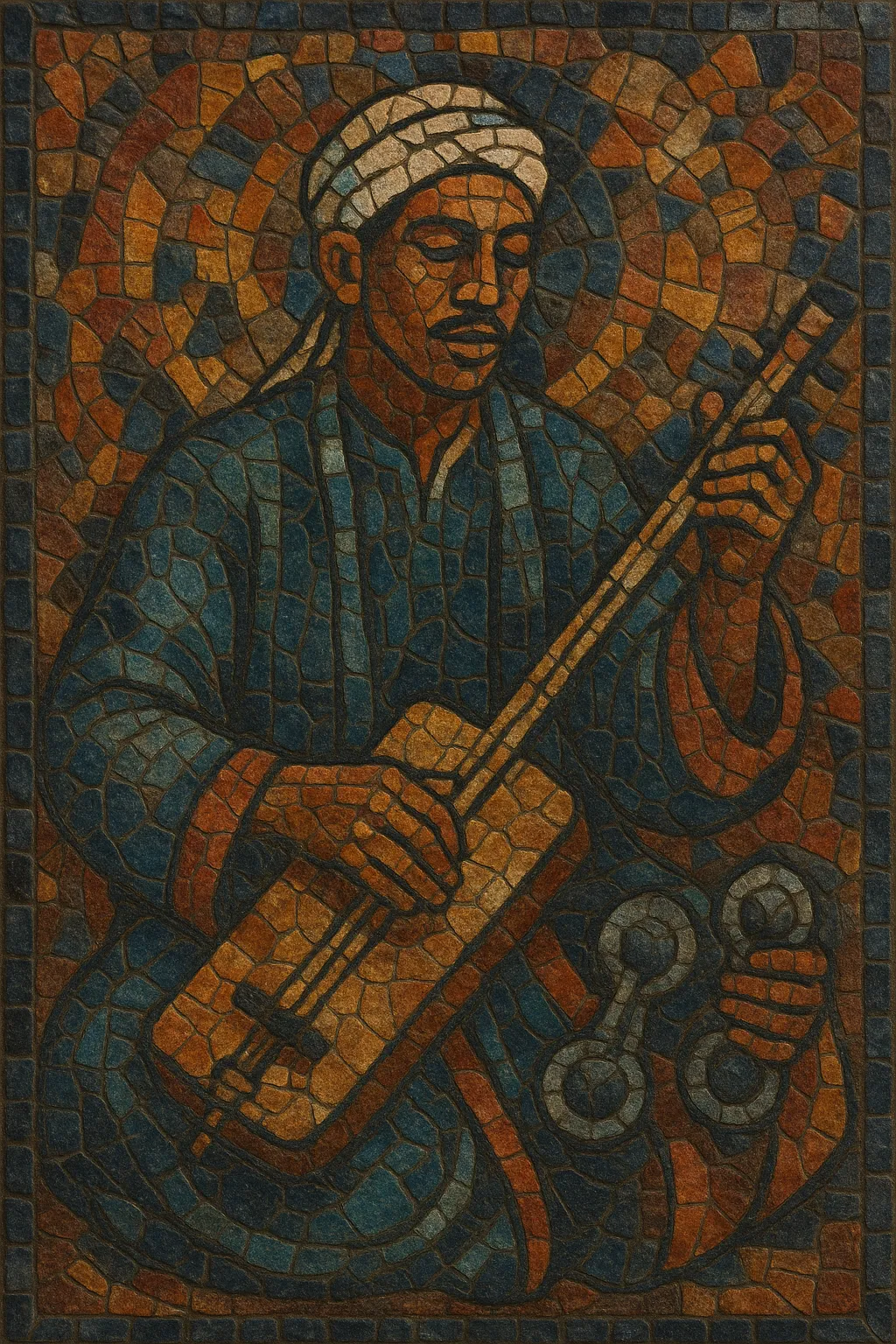Gnawa is a spiritual, trance-based music of Morocco associated with the Gnawa brotherhoods, a community with roots in sub‑Saharan Africa and Sufi Islam. It centers on a deep, percussive bass lute called the guembri (also known as sintir or hajhuj), the bright metallic clatter of iron castanets (qraqeb/krakebs), unison handclaps, and call‑and‑response vocals.
Performances often unfold in an all‑night ritual called a lila (derdeba), where cyclical 6/8 grooves and repetitive chants invite communal participation and induce a trance state. The repertoire invokes saints and ancestral spirits (mluk), moving through color-coded suites and intensifying rhythmic layers. While firmly rooted in West African rhythmic sensibilities, Gnawa also absorbs Maghrebi and Sufi aesthetics, producing a sound that is both devotional and intensely groove‑driven.
Gnawa music traces to communities of sub‑Saharan origin who settled in Morocco through centuries of migration, trade, and enslavement, coalescing into distinct brotherhoods by the 1500s. These communities fused West African rhythmic heritage with North African (Maghrebi) and Sufi devotional practice, creating a unique ritual music focused on healing, remembrance, and trance.
At the core is the lila (derdeba), an all‑night ceremony that sequences suites associated with specific spirits (mluk). The guembri’s low droning ostinato, polyrhythmic qraqeb patterns, and call‑and‑response chants guide participants through phases of invocation and catharsis. The music’s cyclical structure, color symbolism, and codified repertoire were maintained and transmitted by master musicians known as maâlems.
In the 20th century, Gnawa communities became more visible in cities such as Marrakech, Essaouira, and Casablanca. Recordings, radio, and later cassette culture documented the work of prominent maâlems and helped standardize certain song cycles while preserving regional nuances.
From the late 20th century onward, festivals—especially the Gnaoua and World Music Festival in Essaouira (founded in 1998)—introduced Gnawa to international audiences. Collaborations with jazz, rock, and electronic artists highlighted the style’s modal openness and rhythmic power without diluting its ceremonial essence. Today, Gnawa thrives both in its ritual context and on concert stages, with younger and female practitioners expanding its reach.


